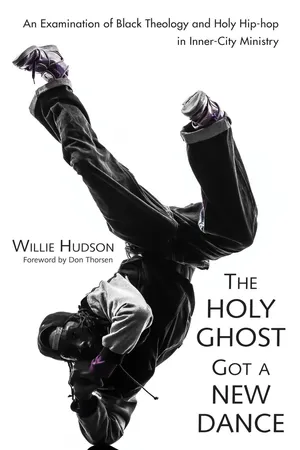![]()
Ethnomethodology—The Abnormality of Normalcy
![]()
Chapter 6
Relevant Social Analysis
A number of social facts have been documented and made available for researchers who are interested in sociological interpretations of the inner-city. Fortunately, the documentation of these facts are accessible at the common sense level so that the non-specialist can draw out implications and conclusions in support of related studies. It was necessary to draw upon these studies to describe factors that impact the inner-city and shape its relationship to the rest of society. The data examined in this chapter will assist a better understanding of social conditions that are largely unacknowledged and unaddressed in the mainline church.
Three questions will be raised in this chapter:
1. Is it the responsibility of the church to get involved with these “worldly/secular” issues?
2. How does the church affect change in these situations?
3. What help does Black Theology and Holy Hip-hop offer in shaping the church’s response to these situations?
It is important to realize that, at least in perception, nothing is being done to correct these issues and no known governmental effective agenda is established to resolve the current problems. The escalating level of these social pathologies has created an ever-widening gap between the haves and have-nots in American society. Growing mistrust and anguish influences the minds and actions of people who feel oppressed and left out of the “American Dream.”
The data presented here is not new. The level of failure in the obligation to meet social need and the measurements that show it are well known; there are so surprises. Martin Luther King Jr. complains:
Cone argues the church and Christians have not adequately demonstrated that their theory (theology) and practice (discipleship/doing of the Word) are always consistent. Many within the ecclesiastical community are aware of the data presented here, but the church still pays inadequate attention to the “least of these” (Matt 25:45). Cone argues:
Among the first issues to be examined are sub-standard educational opportunities and their effect on inner-city ministry. Several studies have pointed out that educational inequities have led to gross economic gaps and contributed to poverty and social inequities among black and brown people. As a result, what is real outside the school does not affect what is taught inside the school, thereby making education unrealistic. The truth about life is lost in the boredom of non-stimulating intellectual discussions, making education irrelevant. Therefore, school has no value for black and brown youth, and where there is no value, there is no participation, thus making education worthless and unnecessary.
The No Child Left Behind Act (NCLB) of 2002 was a federal law proposed by President George Bush, which legislated funds aimed at improving the performance of U.S. schools by increasing standards of accountability as well as providing parents flexibility in choosing which schools their children will attend. The overall intent of the NCLB is that all children achieve a state standard to reach their full potential. In order to meet these goals, the NCLB has divided its funding into “titles” aimed at equal opportunity for all students regardless of race, gender, and as Secretary Margaret Spellings indicated, zip codes. In brief, these titles include the following:
1. Title I, Part A supports programs and resources for disadvantaged students. Title 1A funding is designed to aid districts in closing the achievement gap by placing highly qualified teachers in classrooms.
2. Title I, Part D is designed to serve delinquent and neglected youth in institutions, day programs, and correctional facilities to assure they attain high academic levels of achievement.
3. Title II, Part A provides resources for improving teacher and principal quality. It focuses on preparing, training, and recruiting high-quality teachers and principals.
4. Title II, Part D facilitates improved student academic achievement through the use of technology in schools.
5. Title IV, Part A provides resources for fostering a safe and drug-free learning environment that supports academic achievement.
The overall failure of NCLB has not gone undocumented within the last 10 years of its existence, and additionally, it should be noted that the unequal social/education gaps which prompted the NCLB existed in 1965 Watts Riots, thirty-six years prior to NCLB, 1992 Compton Riots, nine years prior, and are still present in 2015, fourteen years after NCLB was implemented, especially in particular zip codes. Lisa Guisbond, a policy analyst, and Monty Neill, an executive director, along with Bob Schaeffer, a public education director, all from the National Center for Fair and Open Testing in Boston, whose aim it is to end the misuse of standardized testing, have written an assessment of the NCLB. In their article, “NCLB’s Lost Decade for Educational Progress: What Can We Learn from this Policy Failure,” commented,
